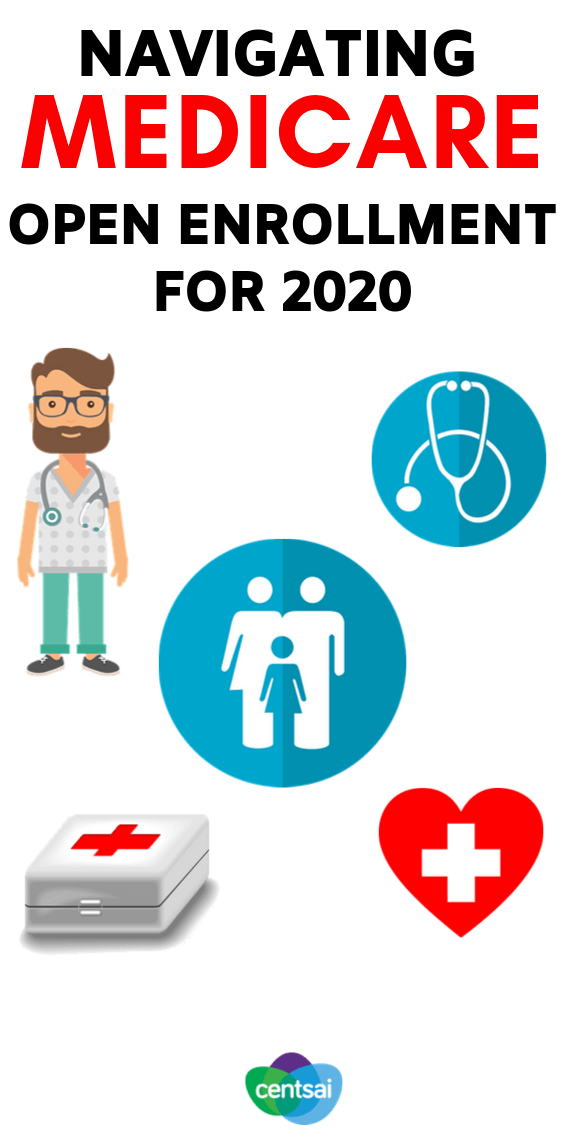
 Medicare open enrollment for 2020 is here. The open enrollment period runs from October 15, 2019 through December 7, 2019. There are several choices you can make for your Medicare coverage during this time. For many people, their existing coverage will change for the coming year, making a review of their options important. Here’s what you need to know to navigate the Medicare open enrollment for 2020.
Medicare open enrollment for 2020 is here. The open enrollment period runs from October 15, 2019 through December 7, 2019. There are several choices you can make for your Medicare coverage during this time. For many people, their existing coverage will change for the coming year, making a review of their options important. Here’s what you need to know to navigate the Medicare open enrollment for 2020.
Two Different Enrollment Periods for 2020 Medicare
The Medicare open enrollment period that runs from October 15 through December 7 allows you to make a variety of changes to your existing coverage. It also allows you to enroll in prescription drug coverage (Medicare Part D) if you did not do so when first eligible.
There’s also another enrollment period for Medicare Advantage plans. The Medicare Advantage open enrollment runs from January 1 through March 31 each year.
Find the Best Health Insurance Option for You — Get a Free Quote Here >>
Let’s review the different pieces of Medicare first.
Different Medicare Plan Types
Medicare Part A is hospital insurance. Everyone age 65 and over should have Part A.
Medicare Part B is medical insurance. You pay a monthly premium for this kind of coverage. You may or may not need Part B, depending upon what other medical coverage you have.
Medicare Part C — also called Medicare Advantage — is an alternative to traditional coverage provided under Parts A and B. You must be enrolled in Parts A and B in order to get coverage under a Medicare Advantage plan. The Medicare Advantage plan then provides your Medicare coverage in lieu of original Medicare.
Medicare Part D is prescription drug coverage. We’ll talk about this more a little later.
Make Sure You’re Prepared for Medical Costs — Sign Up for a Health Savings Account >>
2020 Medicare Open Enrollment Options
The 2020 Medicare open enrollment allows you a number of options to change your Medicare plan. You can change from original Medicare to a Medicare Advantage plan, or likewise from a Medicare Advantage back to original Medicare. You can also change from one Medicare Advantage plan to another.
In addition, you can change from one Part D prescription drug plan to another. If you didn’t enroll in a Part D plan when first eligible, you can enroll in one during this open enrollment.
If you fail to enroll when first eligible, you may have a late enrollment penalty.
In order to enroll in a Medicare Advantage plan, you must first have Medicare Parts A and B. You will continue to pay your original Medicare premium (generally only Part B), plus any premium for your Medicare Advantage plan.
The other basic stipulations are that you reside within the Medicare Advantage plan’s service area and that you generally cannot have end-stage renal disease.
Compare Health Insurance Plans to Get the Best Price — Get a Free Quote Here >>
Considerations
For many retirees, Medicare is their health insurance. Its coverage and its costs have major effects on their lives. Changes should not be undertaken lightly.
Many retirees, especially those in and around large population centers, have a lot of choices. There may be a number of Medicare Advantage plans to compare, as well as original Medicare.
You will most likely pay an additional premium for a Medicare Advantage plan — not always, but you generally will. The additional coverage provided needs to make sense in your particular health situation.
You should also consider the availability of your preferred providers under each option.
Not all plans are accepted everywhere, so be careful that any plan you consider will allow you to keep your doctor — presuming you want to.
Some Medicare Advantage plans also include a Part D prescription drug plan. Part D plans are available as standalone plans or as integrated parts of Medicare Advantage plans.
Each Part D plan has a formulary that shows exactly what prescriptions are covered and for how much. Cost differences between plans can be sizable for those on expensive prescriptions.
Simplify Your Health Savings Account — Sign Up Now >>
Costs and benefits change each year. Plans are required to notify you of any changes to coverages or costs by September 30 of each year. This allows you to prepare for that year’s open enrollment if you need or want to make changes.
Medicare Advantage Open Enrollment
In addition to the annual Medicare open enrollment each fall, there is also a Medicare Advantage open enrollment, which runs from January through March. During the Medicare Advantage open enrollment period, you can make a change to your Medicare plan.
You can switch from original Medicare to a Medicare Advantage plan or from a Medicare Advantage back to original Medicare. If you already have a Medicare Advantage plan, you can switch to a different one.
This is a far more restrictive open enrollment period.
You can only switch once during this open enrollment, and you can neither make an initial enrollment into a Part D plan nor change from one Part D plan to another. That said, if you’re leaving a Medicare Advantage plan with a Part D included and going back to original Medicare, you can enroll in a Part D plan.
If you found that the plan you switched to during the Medicare open enrollment in the fall isn’t meeting your needs, this gives you an opportunity to change.
Find the Best Health Insurance Option for You — Get a Free Quote Here >>
Navigating Medicare Open Enrollment for 2020: Final Tips
On the surface, you simply have the choice of which Medicare plan works best for you for the coming year. Comparing plans isn’t always easy to do, and what the future year will bring health-wise is always an unknown. This isn’t a small decision.
When considering a Medicare Advantage plan, remember that the premiums and benefits are set for only one year. They can and likely will change to some extent each year.
Some people delay enrolling into a Part D plan because they’re not presently on any prescriptions. But if you do delay, you’ll have a penalty when you end up enrolling later. In this case, it can make sense to enroll in a free or low-cost Part D plan and then switch if appropriate when you start needing more comprehensive coverage somewhere down the line.
Health insurance companies put a lot of effort into selling Medicare Advantage plans. Some provide valuable additional benefits. Others less so. It may make sense to involve someone who may eventually help you with health decisions in the selection process.
An adult child, for example, could be an invaluable extra set of eyes and ears when an insurance representative is making a case for you to switch to a different plan.
Switching can provide valuable additional benefits, but it can also cost you an additional premium or cause you to have to change providers. And there’s no guarantee that the same benefits will be there next year or in five years. A change can be for the better, but the best changes are ones that you think through thoroughly.
Simplify Your Health Savings Account — Sign Up Now >>




